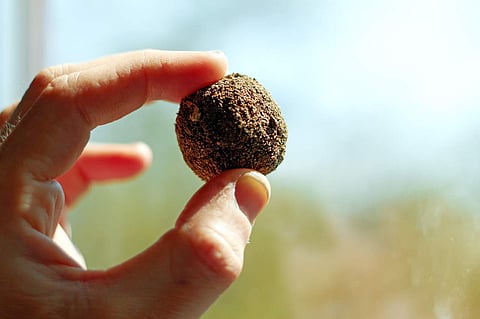

The monsoon somehow makes the green of the trees greener and the brown of the soil browner, and so it seems like the perfect weather to plant saplings. Seed balls are an interesting way to go about this task. And if you don't know how to make one, don't worry, Rohit Vidyanand has you covered.
Rohit works as an Outreach Officer for Greenpeace India and goes the extra mile by conducting several workshops independently, including ones on waste management, compost-making and seed ball-making. He has learnt these techniques by himself and by attending various conferences. For two years, he has been spreading his knowledge to schools, colleges, gated communities and other groups by conducting the workshops. "The first time I started composting, I got it terribly wrong. I kept at it and now, I am confident about it," says Rohit.
Talking about the purpose behind conducting these sessions, he says, "I really want to explain to the students the importance of environmental conservation.” This 25-year-old has conducted workshops at prestigious institutions in Hyderabad such as St Francis College For Women, Jawahar Navodaya Vidyalaya and others. He wishes to conduct more and more of them so that people start being more environmentally-conscious and do more for Mother Earth.
The seed ball-making workshops starts off with Rohit explaining the importance of greenery around us, what is currently threatening it and the consequences of what we might face if the greenery is wiped out. Then, they proceed to make the seed balls under the supervision of Rohit and his friends. "I try to get the material needed to make the seed ball otherwise, I encourage schools to get them," says the youngster who has an MBA in Finance from Osmania University.
The seed balls need to be dropped within three months or a fungus starts to form which means it has lost its purposes, he informs. "The seed balls' uniqueness comes from its compensation and raw materials," explains Rohit who tells us that Khammam is his native town. He ensures that he maintains a jovial tone throughout his workshop so that students remain engaged along with showing videos and presentations.
What it takes to make a seed ball:
- Take red or black soil, native seeds, cocopeat and compost
- Mix it in equal proportions
- Make cricket ball-sized seed balls for mango and jackfruit seeds. Others can be fist-sized
- It's best to throw these balls in the outskirts or else, nearby parks and open spaces will do
